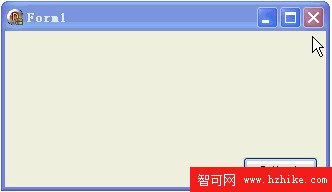在前面例子的基礎上, 探討新問題.
假如我們想讓幾個線程(例子中是 3 個)依次執行, 我們可以使用臨界區、信號、互斥等手段;
但下面第一個例子什麼同步工具都沒用, 也達到了目的; 方法是: 讓前一個線程在結束前順便啟動下一個線程.
第二個例子使用了互斥對象配合 WaitForSingleObject 函數, 也達到相似的目的.
效果圖(兩個例子的效果圖差不多, 但第二個例子的執行順序不好保證):

第一個例子的代碼文件:
unit Unit1;
interface
uses
Windows, Messages, SysUtils, Variants, Classes, Graphics, Controls, Forms,
Dialogs, StdCtrls, ExtCtrls;
type
TForm1 = class(TForm)
PaintBox1: TPaintBox;
PaintBox2: TPaintBox;
PaintBox3: TPaintBox;
Button1: TButton;
procedure Button1Click(Sender: TObject);
procedure FormDestroy(Sender: TObject);
end;
var
Form1: TForm1;
implementation
{$R *.dfm}
const
colors: array[0..2] of TColor = (clRed, clGreen, clBlue);
var
hArr: array[0..2] of THandle;
panitArr: array[0..2] of TPaintBox;
function ThreadFun(p: Pointer): Integer; stdcall;
var
i,n,x1,y1,x2,y2: Integer;
ThreadID: DWord;
begin
n := Integer(p);
panitArr[n].Color := colors[n];
for i := 0 to 50 do with panitArr[n] do
begin
x1 := Random(Width); y1 := Random(Height);
x2 := Random(Width); y2 := Random(Height);
Canvas.Lock;
Canvas.Ellipse(x1,y1,x2,y2);
Canvas.Unlock;
Sleep(2);
end;
{在前一個線程收尾時, 如果新建線程不超過 3 個就繼續建立}
Inc(n);
if n < 3 then hArr[n] := CreateThread(nil, 0, @ThreadFun, Ptr(n), 0, ThreadID);
Result := 0;
end;
procedure TForm1.Button1Click(Sender: TObject);
var
ID: DWord;
begin
panitArr[0] := PaintBox1;
panitArr[1] := PaintBox2;
panitArr[2] := PaintBox3;
{開始只建立了一個線程, 並傳入 0 參數作為標識}
hArr[0] := CreateThread(nil, 0, @ThreadFun, Ptr(0), 0, ID);
end;
procedure TForm1.FormDestroy(Sender: TObject);
var
i: Integer;
begin
for i := 0 to Length(hArr) - 1 do CloseHandle(hArr[i]);
end;
end.
窗體文件:
object Form1: TForm1
Left = 0
Top = 0
Caption = 'Form1'
ClIEntHeight = 156
ClIEntWidth = 321
Color = clBtnFace
Font.Charset = DEFAULT_CHARSET
Font.Color = clWindowText
Font.Height = -11
Font.Name = 'Tahoma'
Font.Style = []
OldCreateOrder = False
OnDestroy = FormDestroy
PixelsPerInch = 96
TextHeight = 13
object PaintBox1: TPaintBox
Left = 8
Top = 8
Width = 97
Height = 113
end
object PaintBox2: TPaintBox
Left = 111
Top = 8
Width = 98
Height = 113
end
object PaintBox3: TPaintBox
Left = 215
Top = 8
Width = 98
Height = 113
end
object Button1: TButton
Left = 238
Top = 126
Width = 75
Height = 25
Caption = 'Button1'
TabOrder = 0
OnClick = Button1Click
end
end
第一個例子的代碼文件(窗體同上):
unit Unit1;
interface
uses
Windows, Messages, SysUtils, Variants, Classes, Graphics, Controls, Forms,
Dialogs, StdCtrls, ExtCtrls;
type
TForm1 = class(TForm)
PaintBox1: TPaintBox;
PaintBox2: TPaintBox;
PaintBox3: TPaintBox;
Button1: TButton;
procedure Button1Click(Sender: TObject);
procedure FormDestroy(Sender: TObject);
end;
var
Form1: TForm1;
implementation
{$R *.dfm}
const
colors: array[0..2] of TColor = (clRed, clGreen, clBlue);
var
hArr: array[0..2] of THandle;
panitArr: array[0..2] of TPaintBox;
hMutex: THandle; {互斥對象的句柄}
function ThreadFun(p: Pointer): Integer; stdcall;
var
i,n,x1,y1,x2,y2: Integer;
begin
n := Integer(p);
panitArr[n].Color := colors[n];
if WaitForSingleObject(hMutex, INFINITE) = WAIT_OBJECT_0 then
begin
for i := 0 to 50 do with panitArr[n] do
begin
x1 := Random(Width); y1 := Random(Height);
x2 := Random(Width); y2 := Random(Height);
Canvas.Lock;
Canvas.Ellipse(x1,y1,x2,y2);
Canvas.Unlock;
Sleep(10);
end;
ReleaseMutex(hMutex);
end;
Result := 0;
end;
procedure TForm1.Button1Click(Sender: TObject);
var
ID: DWord;
i: Integer;
begin
panitArr[0] := PaintBox1;
panitArr[1] := PaintBox2;
panitArr[2] := PaintBox3;
CloseHandle(hMutex);
hMutex := CreateMutex(nil, False, nil);
for i := 0 to Length(hArr) - 1 do
hArr[i] := CreateThread(nil, 0, @ThreadFun, Ptr(i), 0, ID);
end;
procedure TForm1.FormDestroy(Sender: TObject);
var
i: Integer;
begin
CloseHandle(hMutex);
for i := 0 to Length(hArr) - 1 do CloseHandle(hArr[i]);
end;
end.